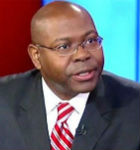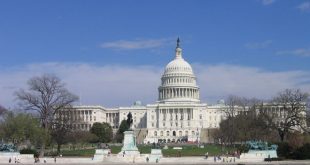The White House Correspondents’ Dinner in 2015 included an ingenious skit featuring President Obama and the comedian Keegan-Michael Key. As Mr. Obama stood at a lectern offering vapid pleasantries about White House press coverage, his “anger translator,” portrayed by Mr. Key, lurked behind him acting out what the president was really thinking.
Today, Democrats keep their “anger translators” in-house, among the progressive members of the 116th Congress sworn in last week. Already we’ve heard Rep. Rashida Tlaib, the freshman Democrat from Michigan, announce with an obscenity that her caucus is dead-set on impeaching President Trump. Next came Rep. Alexandria Ocasio-Cortez of New York, laying out the new House majority’s ambitious agenda—universal health care, free college tuition, a Green New Deal to combat climate change—in an interview with Anderson Cooper that aired Sunday on “60 Minutes.”
There have been some halfhearted attempts by Democratic leaders to distance themselves from Ms. Tlaib’s remarks and Ms. Ocasio-Cortez’s plans, but the reality is that both women are expressing views that fall well within the party mainstream. Dutifully, they’re trying to mollify the “resistance” while Democratic leaders appeal to more-moderate and independent voters.
Sure, Speaker Nancy Pelosi has insisted that Democrats are focused on health care and infrastructure, and not on running the president out of the Oval Office. She even spurned a request from Ms. Ocasio-Cortez to establish a House committee tasked specifically with advancing the freshman lawmaker’s green agenda. But these disagreements are over tactics, not objectives. The speaker and the freshmen remain united in their desire, among other things, to impose single-payer health care, increase environmental regulations and, yes, impeach Mr. Trump. There’s little difference between Alexandria Ocasio-Cortez’s progressive cri de coeur and the campaign platforms of Sen. Elizabeth Warren and other Democratic presidential wannabes.
It was Ms. Ocasio-Cortez’s response Sunday to a question about marginal income-tax rates that received the most attention. When Mr. Cooper asked her if she had a specific tax rate in mind, the congresswoman replied: “You look at our tax rates back in the ’60s, and when you have a progressive tax rate system . . . sometimes you see tax rates as high as 60 or 70%.” But the lesson of the 1960s is that lowering tax rates, not raising them, boosts government revenue. And it’s a lesson that the political left continues to ignore.
“It is a paradoxical truth that tax rates are too high today and tax revenues are too low and the soundest way to raise the revenues in the long run is to cut the rates now,” said President Kennedy in 1962, when he previewed legislation that would lower personal income-tax rates among all earners. JFK was assassinated before Congress could act, but his successor, Lyndon Johnson, made tax relief his top priority, and in 1964 rates fell across the board. The top marginal rate, which had been 91%, was reduced to the 70% cited approvingly by Ms. Ocasio-Cortez. The bottom rate fell to 14% from 20%, and all 22 rates in between were reduced as well.
By mid-1965 revenue already far exceeded what it had been in the year before the rates were lowered. Disposable income increased and unemployment fell. It was a tax reduction, not a tax increase, that swelled government coffers and financed LBJ’s Great Society and War on Poverty.
Kennedy and Johnson weren’t blazing any new trails in calling for tax cuts to help spur the economy. They knew it had happened before in the 1920s when Andrew Mellon, Treasury secretary under Presidents Harding and Coolidge, oversaw a series of tax cuts that pushed the top marginal rate down to 24% in 1929 from 73% in 1921. As would occur again decades later, a significant increase in government revenues followed and the ’20s roared. Moreover, the wealthiest earners not only paid a larger total amount of taxes but also a higher percentage of all taxes collected. In 1920, people in the top bracket were responsible for 29.9% of all federal income taxes. By 1928 they were paying more than double that share, even though their tax rate had been slashed to 20% from 77% over the same period.
The administrations of Ronald Reagan and George W. Bush cut high marginal rates with similar results. Instead of stashing money in tax shelters, people invested in the private economy, producing more taxable income for the federal government to spend. A mantra on the class-warfare left is that the rich need to pay their “fair share,” yet Democrats are reluctant to reduce top marginal rates, which historically has been a surefire way to increase the tax burden carried by “the rich.” Their “anger translator” gets the best of them every time.
Photo credit: Lorie Shaull (Creative Commons) – Some rights reserved
 Jason Riley is a member of The Wall Street Journal Editorial Board.
Jason Riley is a member of The Wall Street Journal Editorial Board.
The views expressed in opinion articles are solely those of the author and are not necessarily shared or endorsed by Black Community News.
 Black Community News News and Commentary for Christians
Black Community News News and Commentary for Christians




Same old tired prescription, “Eat the rich.” What they never seem to realize is that if they took everything away from “the rich,” they might be able to keep the Federal Government running for a couple of weeks – and then where would the revenue for all their social programs come from?!
“Instead of stashing away…people invested…” That was the hope of “trickle down,” but in reality it never did, has or never will work.